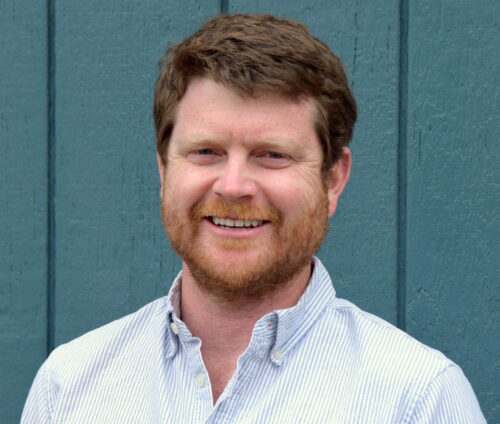USAID Urban Champion: Colin Quinn

Colin Quinn is an ecologist who works for the USAID’s Bureau for Africa. He is on the climate change team where he focuses primarily on urban issues, as well as health issues. He brings experience from his time working at the National Oceanic and Atmospheric Administration (NOAA), where he helped link climate and weather research to climate policy and decision making. In 2013, he joined the Agency to manage the Coastal City Adaptation Project for USAID in Mozambique. His focus on how we can use climate and weather information to improve urban resilience through a cross-sector approach can inform staff and lead to collaborative solutions.
Africa has the highest rate of urbanization in the world, and many cities in Africa, particularly coastal cities, are vulnerable to climate impacts. By reducing climate risks in our programs, USAID can help cities grow responsibly and sustainably across multiple sectors, including urban planning and health.
How is urbanization impacting USAID’s work around the world? What health challenges/opportunities does it present?
In Africa, 30 percent of people currently live in cities; by 2030 50 percent of Africa’s population will live in cities. Between 1995 and 2016 the urban population grew from 237 million to 472 million. The urban population is expected to double again by 2035, with close to 1 billion people living in urban areas on the continent. Inland, coastal and mountainous cities face different climate risks, such as more intense storms, sea level rise, recurrent droughts, and changing rainfall patterns. Many people are moving to urban slums, where cholera is often a risk. In 2017, heavy rains in Mozambique likely led to a cholera epidemic infecting more than 2,000 people. In addition, dengue, which is mostly found in urban or semi-urban areas, may increase due to the combination of urbanization and changes in temperature and rainfall. Many municipal governments may not be well equipped to address these types of challenges.
What are some of the successes or best practices that you have seen in your work?
Currently, USAID is helping municipal governments build their own capacity to prepare for extreme weather so that they can continue to grow and thrive. This may mean helping them access financing to make infrastructure more resilient, or working with national and local governments to develop policies that would enable them to jointly address climate related health challenges. In Mozambique, the Coastal City Adaptation Project helps growing coastal cities minimize loss and disruption from climate impacts. This includes anything from integrating weather and climate data into zoning regulations, land use plans and disaster risk reduction plans, to restoring coastal mangroves to prevent flooding from storm surge.
What do you see as important trends shaping the future of urbanization? What will USAID’s role be moving forward?
The most important trend I see in Africa is that cities are rapidly growing, particularly secondary cities. Increased temperatures, changes in rainfall patterns and more frequent and extreme weather events put additional stress on their ability to grow their economies. By helping cities access the right climate and weather information, tools and technologies, and multiple sources of finance, USAID can help cities build climate resilience so they can achieve their development goals.
USAID’s Land and Urban Office is looking to feature Urban Champions throughout the Agency who recognize the impact urbanization has on global development today and into the future.
You can nominate anyone (or yourself!) who:
- Has a project with an urban focus in their portfolio
- Has worked on project design that includes interventions in urban areas
- Has an academic or research background in urbanization
- Is passionate about the challenges urbanization presents.
To nominate someone, email info@urban-links.org and let us briefly know why your nominee deserves to be featured.

